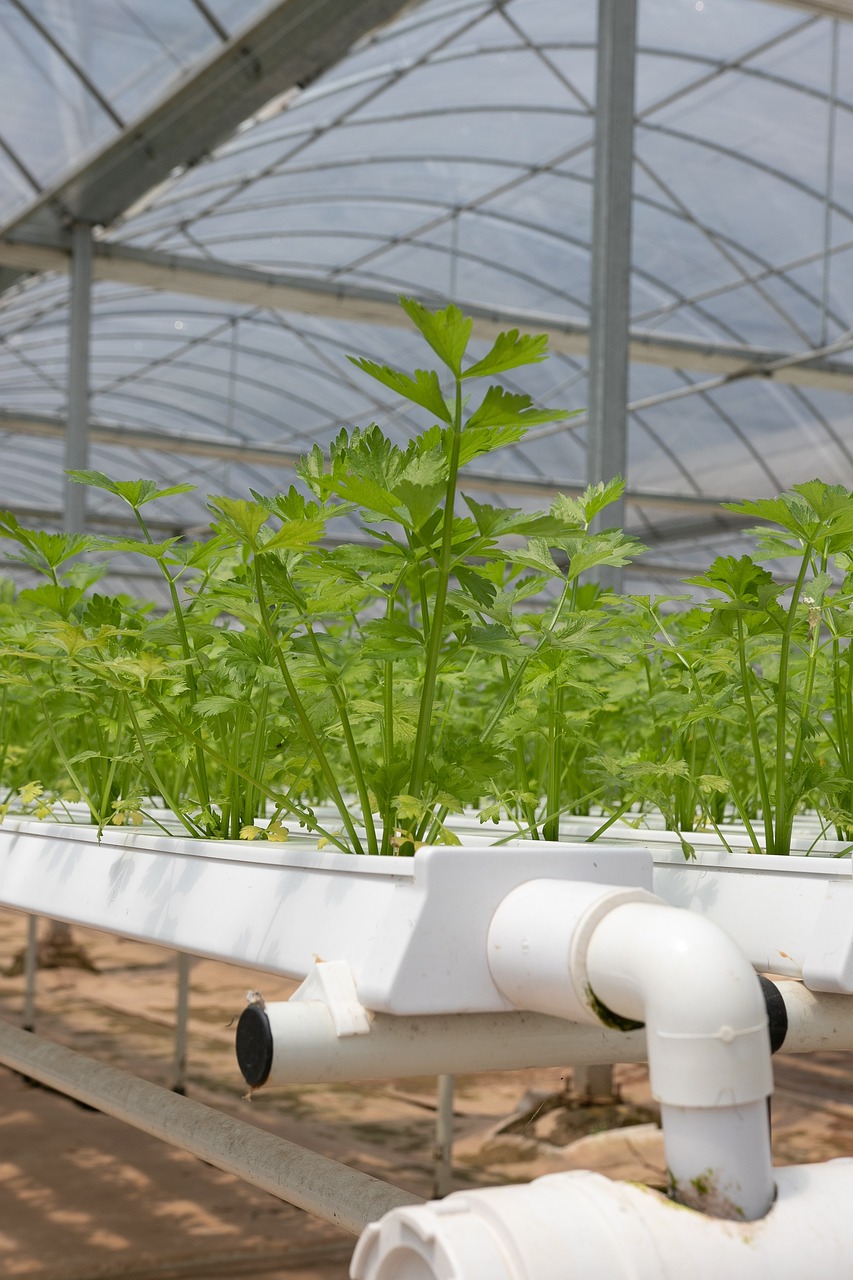Hydroponics is becoming a major roleplayer in farming these days, because you can grow fresh and healthy plants year-round with the right nutrients, lighting, and equipment.
Hydroponics is a method whereby you grow plants without soil. The plants are rooted in a nutrient-rich solution and supported by an inert substance like gravel, sponge, coco coir or anything similar. The nutrient rich solution provides the nutrients the plant needs to grow.
This allows the grower to control the nutrients the plant needs to grow which can result in faster growth and higher yields. These systems also use less water than traditional planting methods and can be placed virtually anywhere.
Once you have decided to use hydroponics as a planting method there are a few things to consider. The first being what type of hydroponics you want to use.
Hydroponic systems can be divided into two categories, a passive hydroponic system, and an active hydroponic system.
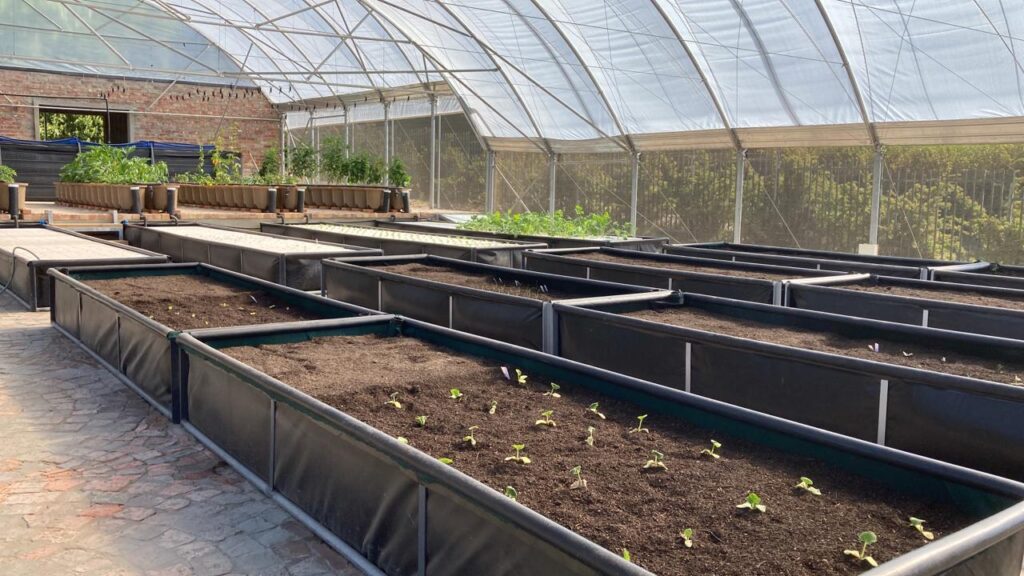
Wicking beds in a Kleinskuur Aquaponics system. (Photo: www.ksba. co.za)
Passive hydroponic systems
Passive hydroponic systems rely on gravity or evaporation to circulate the nutrient solution. In this type of system, the roots are suspended in the solution which is circulated using gravity.
The wick system is one such an example. The plants roots are suspended in a container with substrate, a reservoir of nutrient solution is placed beneath the container. A wick connects the reservoir to the growing medium and transports the nutrients to the plant’s roots.
This method requires no circulation system and the water, and nutrients are only provided from beneath. The reservoir at the bottom needs to be filled up from time to time.
The Kratky system is another passive system and requires no pump or timer. In this method the plants roots are suspended directly into the nutrient solution and the container is covered with plastic wrap or a lid. Through this controlled evaporation the residual moisture feeds the plant.
Positive aspects of a passive hydroponic system
- These systems are relatively simple and easy to set up
- They are less likely to fail
- They are cheaper than other more complicated systems
- Because they rely on gravity and evaporation there are no pumps or other moving parts necessary
Negative aspects of a passive hydroponic system
- They are not as efficient as active systems
- They require more maintenance
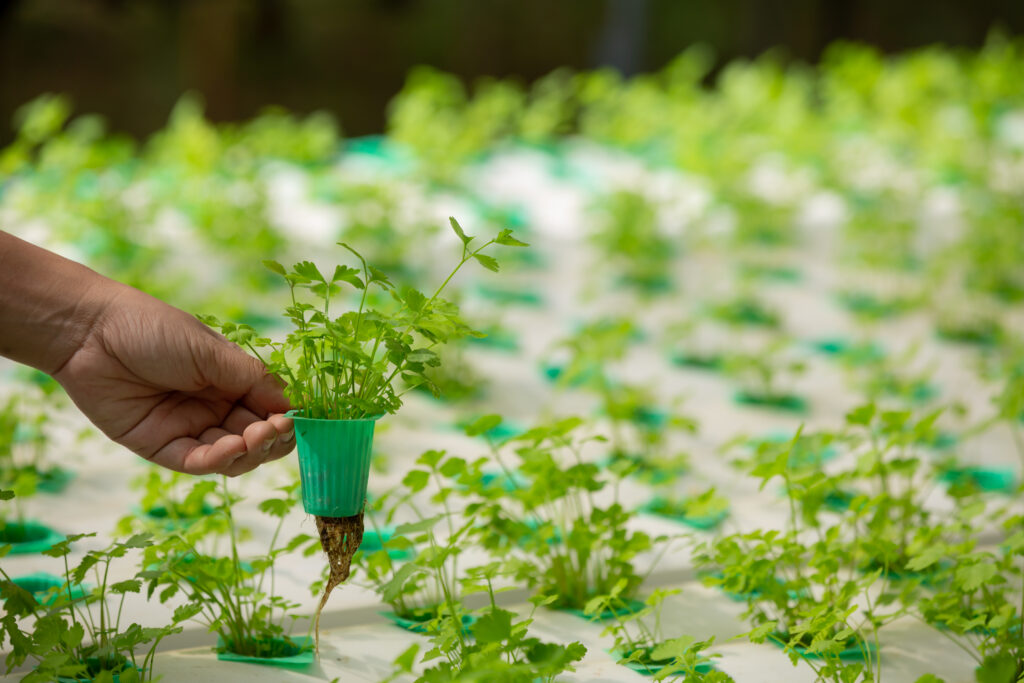
Hydroponics system, planting vegetables and herbs without using soil for health, Modern food and agricultural design concepts.
Active hydroponic systems
Active hydroponic systems rely on pumps to circulate the nutrient solution. In this system the root of the plant is suspended in a growing container and a pump circulates the nutrient solution through the roots.
The drip system is one such active hydroponic system. In a drip system the nutrient solution is pumped from the reservoir to the grow bed where it drips onto the plants’ roots. The excess solution then drains back into the reservoir.
Another well-known active system is the NFT (Nutrient Film Technique) system. With an NFT system the nutrient solution is pumped form the reservoir to the grow bed. It then flows through a channel that runs along the length of the bed. The plants’ roots are suspended in the channel and constantly exposed to the flowing nutrient solution.
Positive aspects of an active hydroponic system
- They are more efficient than a passive system
- They require less frequent maintenance
- With the use of a pump you have better control over the nutrient supply which allows you more precise timing of the nutrient delivery.
Negative aspects of an active hydroponic system
- These systems are more complex and difficult to set up
- They are more expensive to start up
With all this in mind you now must choose the system that will work best for you. Some of the things to consider are:
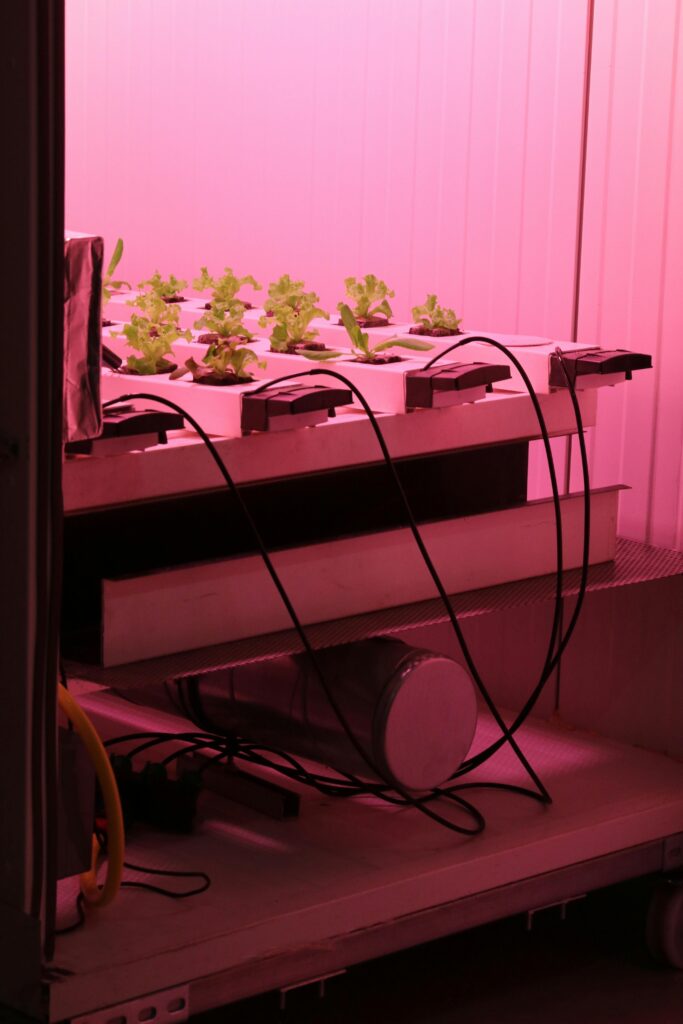
There are different types of hydroponic systems.
How much experience do you have?
Gardening takes patience and if you are a novice the learning curve may take some time. Hydroponic systems typically need more expertise than traditional gardening. You must understand all factors, such as the nutritional needs of your plants, the water needs, when it is time to switch containers or when the pH is too high or too low, among other things.
As your experience grows you can try more complicated systems like ebb and flow systems. But if you are new you can stick to wick systems or even drip irrigation.
How much time do you have?
A successful hydroponic system takes time and effort. Making sure that plants’ roots in aeroponic systems roots do not dry out to ensuring recovery systems in drip irrigation, there is a lot to maintain.
If you do not have enough time to focus on the maintenance and monitoring of your system, then the wick system or non-recovery drip irrigation system is the choice for you.
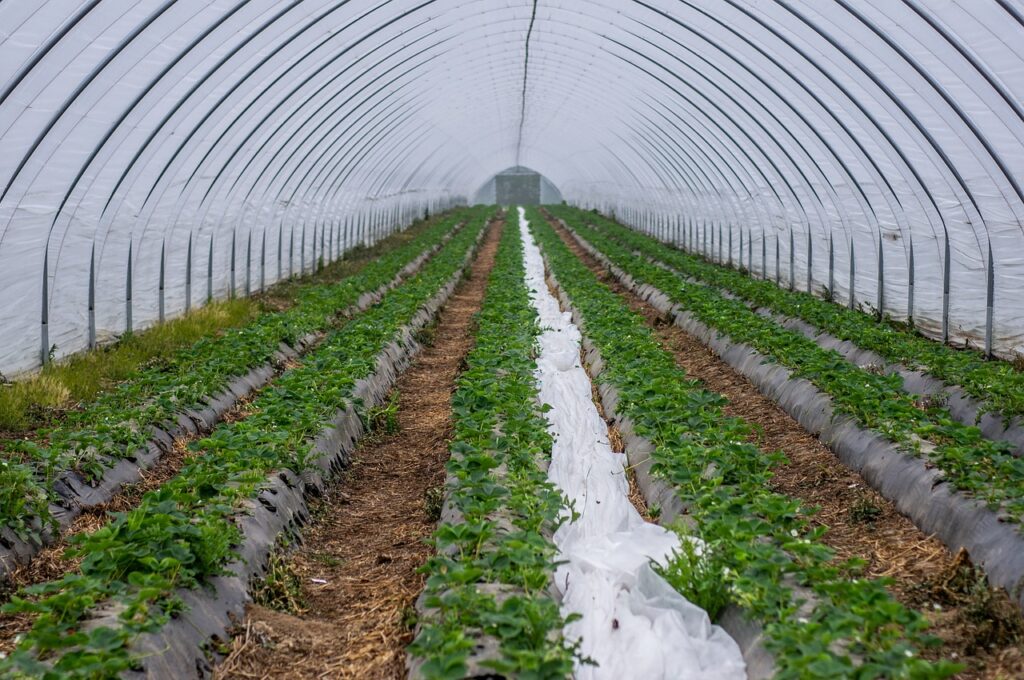
Hydroponic systems come in all shapes and sizes to suit your needs.
What do you want to grow?
Some plants grow better with certain methods of hydroponics, so you must consider what you want to grow. Matching the system with the type of plant you want to grow can save you time and money and keep you from having to change to a different system or modify your existing system in the future.
What is your budget?
Set out your budget before purchasing your hydroponic system, do your research and decide what you need and what the budget would be. There are many different types of hydroponic systems.
How much space do you have?
The type of system you choose will also depend on the space you have available. Hydroponic systems come in all shapes and sizes. Because hydroponic systems typically take up less space than traditional planting methods you will find something that suits your space. Keep in mind that you need to be able to reach all the plants in your hydroponic system.
Different types of hydroponic systems include:
- NFT (Nutrient Film Technique)
- DWC (Deep Water Culture)
- Wick systems
- Ebb and flow/ Flood and drain system
- Drip hydroponics
- Aeroponics
- Kratky method
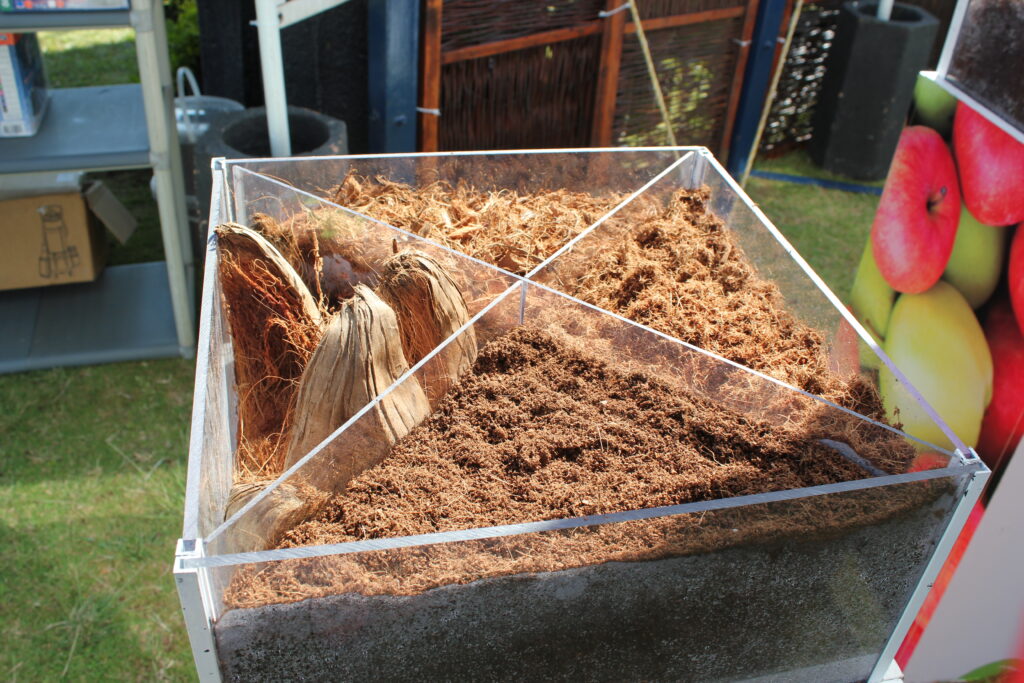
Some of the grow media solutions that can be used.
Types of grow medium solutions
- Rockwool
- Oasis Cube
- Expanded clay
- Coco chips / Fiber
- Perlite
- Vermiculite
- Water
- Rocks or gravel
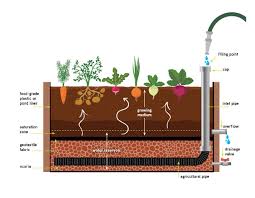
A diagram of a wicking bed. (Image source: www.botanicgardens.org.au)
Do it yourself!
Wicking bed
The principle of a wicking bed is that the water is “wicked” from the bottom of a trough into the root zone of the plants, just like the wick in an oil lamp draws the oil up to the flame. In the case of the wicking bed the heat from the sun and the roots of the plants wick the water up into the root zone where the plants can use it.
The top of the soil may seem dry, but it is moist where the roots need moisture.
How to do it:
- Build a trough or use a container, it can be anything that can hold water; plastic, tarpaulin, fibreglass, even an old bath.
- Lay a pipe at the bottom, diagonally across the trough.
- At the bottom of the pipe drill holes in for the water to run out.
- The pipe must have a 90˚ bend (fitting) with an upright pipe connected to it at each end. The tops of the vertical pipes must stick out about 10 cm above the rim of the container.
- Fill the bottom of the trough up to 10 cm with gravel. Put shade cloth over the gravel and up the sides of the trough. (80% shadecloth works well – the water must be able to go through it)
- Make a hole in the side of the trough or container just above the shadecloth for overflow in case of over-watering or rain.
- Get your soil and compost mix ready and put it on top of the shadecloth. This planting area should be about 30 cm deep.
- Plant your seedlings in the compost mix and put water into the gravel through the ends of the pipe sticking up. The water will run out of the bottom of the pipe into the gravel. Only fill until you see the water running out of the overflow hole.
- Normally you only need to check this water level once a week.
- In this wick system the nutrients are supplied by the compost, which makes it an organic system – if you do not use strong chemical pesticides.
- After every harvest cycle you can top up the compost mix.
This link will take you to a short video on how to build a basic wicking bed.
You can purchase full hydroponic system kits to start off with and add on or change later.
Reference: https://www.nosoilsolutions.com/consider-buying-hydroponic-system/

